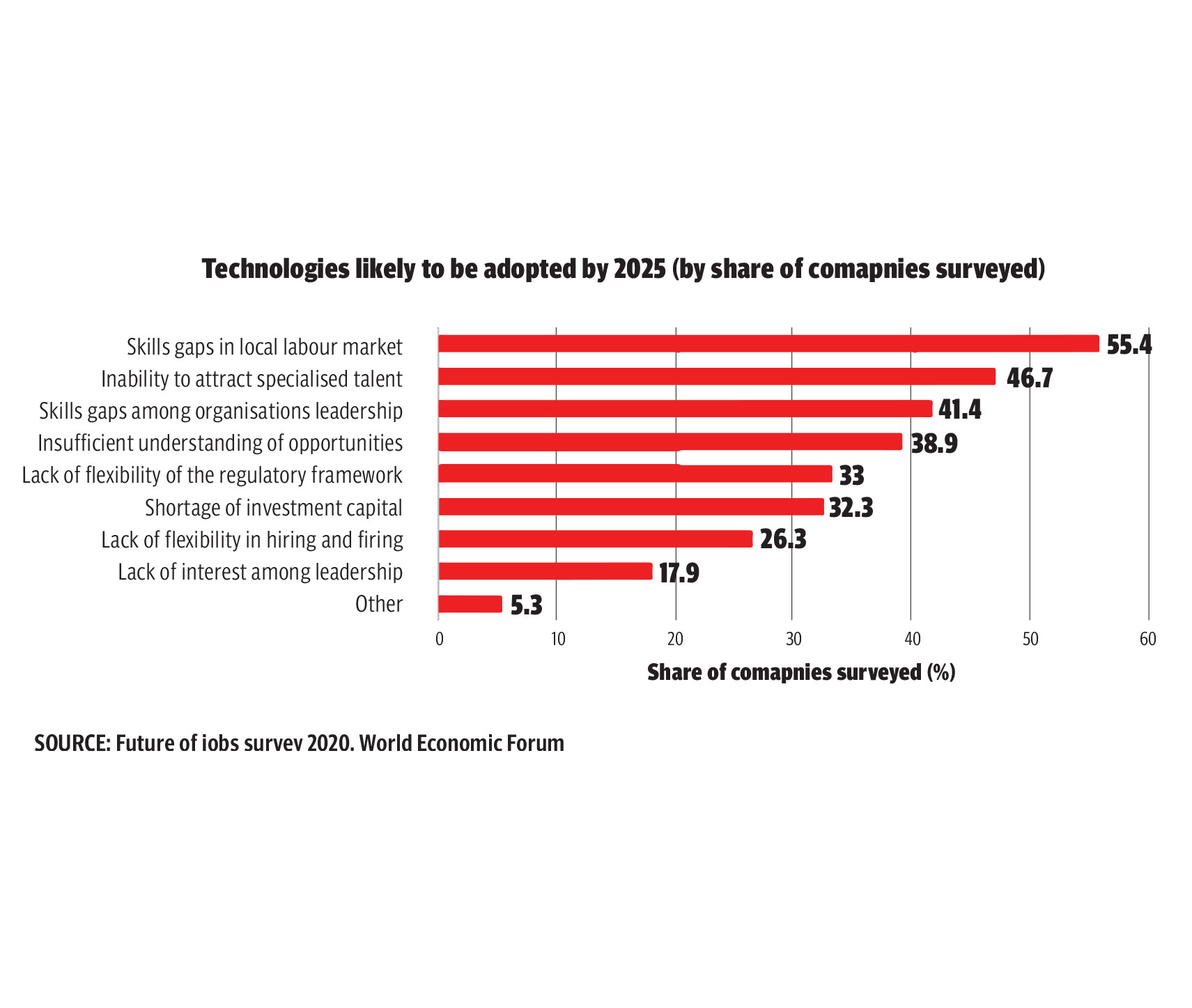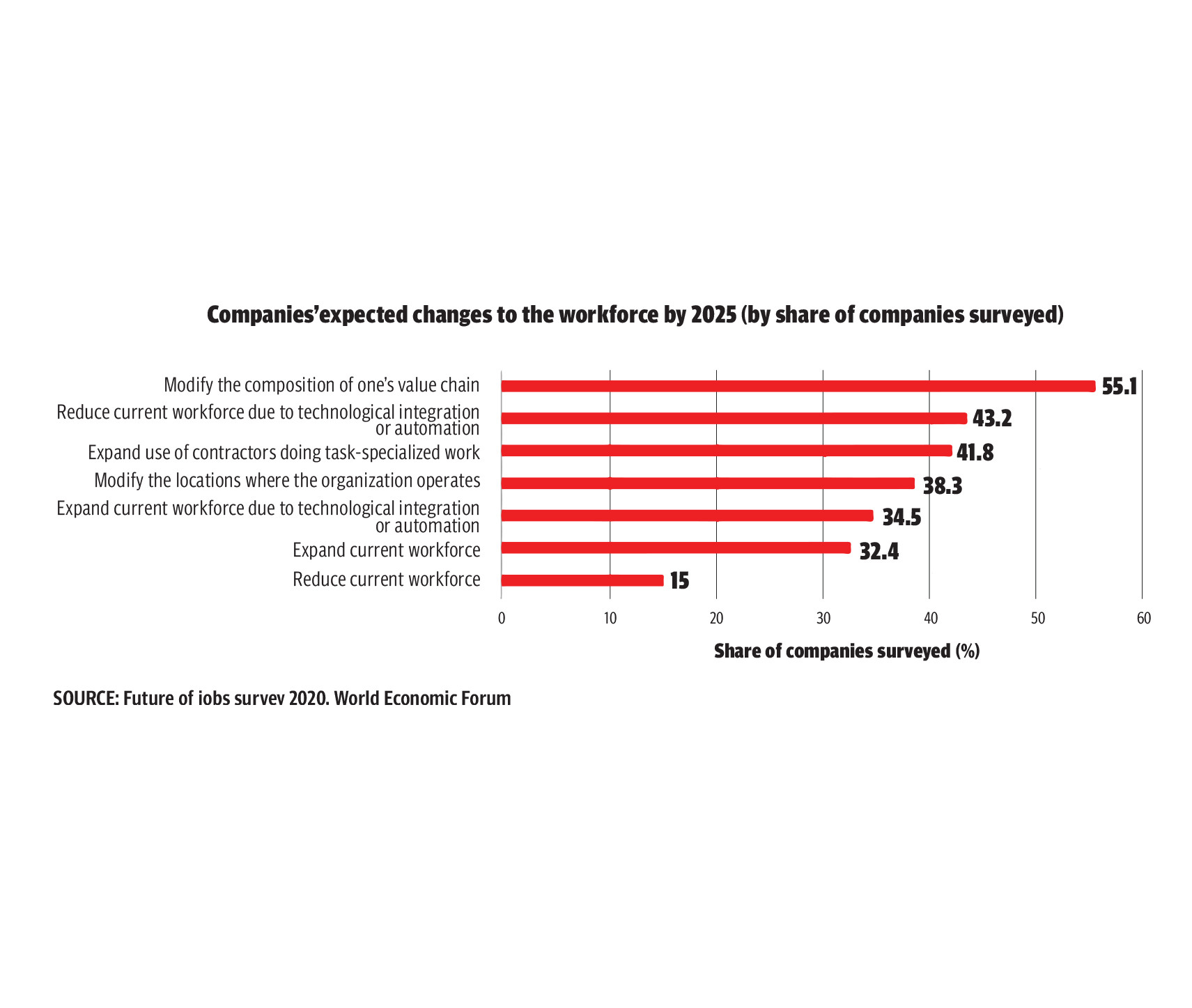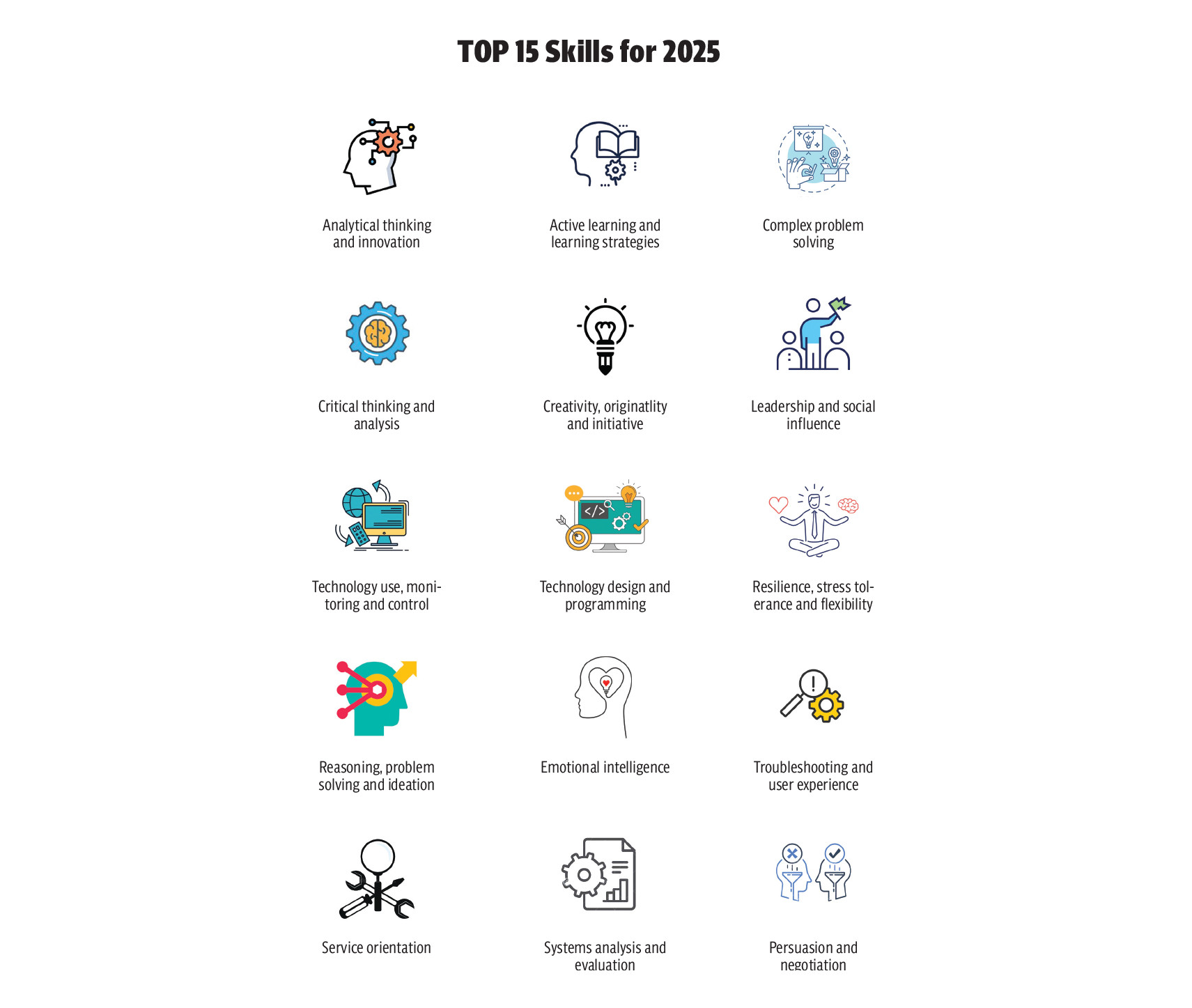Artificial Intelligence (AI) and chatbots like ChatGPT have shaped human life. From altering the way, we live and work, to redefining how we communicate, this new technological dawn is nothing short of extraordinary. However, as the use of AI continues to gain momentum and infiltrate various industries, apprehensions regarding potential job loss have surfaced. The million-dollar question looms large ― will AI and chatbots replace jobs in the near future? And if so, what repercussions will this have on the global economy?
AI and economy
According to the Global Artificial Intelligence Study, the widespread adoption of AI is projected to result in a staggering $15.7 trillion increase in global GDP by 2030, accounting for a massive 26% increase. To put this into perspective, this is more significant than the combined GDP of China and India. This growth will be driven by a 40% increase in productivity and a 60% increase in consumption.
In line with this, the World Economic Forum estimates that 85 million jobs will be displaced, but 97 million new jobs will be created across 26 countries by 2025. This means that the net impact of AI on employment is likely to be negative in the short term. However, the report also suggests that the long-term impact of AI on employment is uncertain and depends on several factors, such as rate of adoption, skills of the workforce, and level of investment in education and training.
AI has already replaced several jobs in manufacturing and service industries, such as assembly line workers, bank tellers, and customer service representatives. However, the recent advancements in AI technology have enabled machines to perform tasks that previously required human intelligence, such as natural language processing, pattern recognition, and decision-making. As AI continues to evolve, it is expected to automate more tasks and replace more high-tech jobs.

Will chatbots replace doctors and lawyers?
What about professional jobs, such as doctors, lawyers, and financial advisors? Can AI and chatbots replace them? The answer is not straightforward. AI can certainly perform some of the tasks that these professionals do, such as diagnosing medical conditions, reviewing legal documents, and analysing financial data. However, these tasks are just a small part of what these professionals do. They also require human skills, such as empathy, judgment, and creativity, which are difficult for machines to replicate, at least right now.
Nevertheless, AI and chatbots are already disrupting these professions. For example, AI-powered medical diagnostic tools are becoming more accurate and reliable than human doctors in some cases. Legal chatbots are helping individuals and businesses navigate legal issues without the need for a lawyer and robot-advisors are managing investment portfolios without the need for a financial advisor.
How will AI affect world economy?
The answer is complex and multifaceted. The adoption of AI and chatbots is likely to increase productivity and efficiency, which can lead to economic growth. But the displacement of workers and professionals can lead to unemployment and income inequality, which can have negative social and economic consequences.
Yuval Noah Harari, the renowned historian and author of Sapiens and Homo Deus, has argued that the rise of AI could lead to increased income inequality in the future. In his book 21 Lessons for the 21st Century, Harari explains how AI is likely to impact the job market and the distribution of wealth. It could lead to income inequality by automating jobs that are currently done by human workers. As AI becomes more advanced, it will be able to perform a wider range of tasks, including those that require high levels of cognitive and creative abilities. This means that jobs that are currently considered safe from automation, such as those in the fields of law, medicine, and journalism, could be at risk.
The displacement of workers by AI could lead to a situation where a small number of people own the means of production and reap the benefits of increased productivity, while the majority of people struggle to find meaningful work. This could result in a widening income gap between the “haves” and the “have-nots”, leading to social and political instability.
The concentration of wealth in the hands of a few could lead to a situation where the rich are able to use their wealth to influence AI algorithms and shape the direction of technological development. This could lead to a scenario where AI is used primarily to benefit the wealthy, rather than to address social and environmental challenges.
Furthermore, the rise of AI could lead to a situation where human labour becomes less valuable, as machines become more efficient and cost-effective. This could result in a situation where people are forced to accept lower wages and work longer hours to compete with machines, further exacerbating income inequality.

Concentration of wealth and power
The rise of AI has the potential to concentrate power and wealth in the hands of a few individuals and corporations due to several reasons.
AI can lead to concentration of power through network effects, a phenomenon where the value of a product or service increases as more people use it. In the context of AI, network effects can be seen in the relationship between data and AI performance. The more data an AI system has access to, the better it can learn and perform. This means that larger companies with access to more data are likely to have more powerful AI systems, giving them a competitive advantage.
For instance, two companies, Company A and Company B are working on developing an AI system for speech recognition. Company A has access to a vast amount of data, including millions of hours of audio recordings, while Company B has access to only a small fraction of this data. Company A is therefore able to train its AI system on a much larger and more diverse dataset, which allows it to perform better than Company B’s AI system.
As a result, Company A is likely to be more successful in the market for speech recognition technology, which can lead to further advantages. For example, Company A may be able to attract more customers, which in turn provides it access to more data. This data can then be used to further improve its AI system, creating a feedback loop that reinforces its position of power and creates a barrier to entry for other companies.
Over time, this feedback loop can lead to a concentration of power in the hands of a few large companies that have access to more data and the most powerful AI systems. This can create a situation where smaller companies and individuals are unable to compete, leading to a concentration of power and wealth in the hands of a few.

The scalability of economic growth and intellectual property
Another way that AI can lead to concentration of power is through economies of scale. Economies of scale refer to the cost advantages that larger companies have over smaller ones due to their ability to spread fixed costs over a larger output. As AI systems become more advanced, the cost of developing them increases, making it difficult for smaller companies to afford the investment required. This gives larger companies with more resources a competitive advantage, allowing them to dominate entire industries and concentrate power and wealth. As a result, smaller companies and startups may struggle to compete with larger companies, further reinforcing the concentration of power in the hands of a few dominant players.
The development of AI often relies on the creation of intellectual property (IP), such as algorithms and datasets. IP is a key component in the development of AI, as it encompasses the algorithms, datasets, and other innovations that drive AI advancements. Companies that are able to create valuable IP in the AI space can benefit from it in the form of profits, creating a source of wealth and power. However, the development of IP is often expensive and resource-intensive, which can make it difficult for smaller companies and individuals to compete with larger corporations that have more resources at their disposal. As a result, larger companies are often able to accumulate more IP, creating a concentration of power and wealth that can further reinforce their dominant position in the market.
Control over data is a crucial factor in the development of AI, as AI systems require access to large amounts of data to learn and improve. Companies that have control over data sources, such as social media platforms, search engines, and e-commerce sites, are able to use this data to train their AI systems and gain a competitive advantage. As a result, a few companies that have access to vast amounts of data can consolidate their power and influence in the market. This concentration of data and power can create a barrier to entry for smaller companies, as they may not have access to the same level of data needed to develop competitive AI systems, leading to a further concentration of power and wealth in the hands of a few dominant players.
The regulatory capture
Finally, there is the risk of regulatory capture which refers to a situation where companies are able to use their power and influence to shape regulations and policies in their favour. This can occur when regulators become too closely aligned with the interests of the companies they are supposed to regulate, leading to a conflict of interest. In the case of AI, companies with significant power and wealth may be able to use their influence to shape regulations and policies in ways that benefit them, such as creating barriers to entry for competitors or limiting the ability of regulators to oversee their activities. This can lead to a situation where regulations are designed to benefit the largest and most powerful companies, further reinforcing their position of power and wealth, while smaller companies and startups are left at a disadvantage.
A threat to society
The increasing use of AI to monitor and control individuals and groups could lead to a loss of privacy and civil liberties. AI systems can be used to track people’s movements, behaviours, and online activity, which could be exploited to exert control over their lives, ultimately leading to a digital dictatorship. Secondly, the rise of AI could lead to widespread job displacement and income inequality, disrupting traditional business models and contributing to the contraction of the capitalist class. A few companies with access to advanced AI systems could dominate the market, making it difficult for small businesses and startups to compete, resulting in a less diverse and more controlled economy.

Potential risks and challenges
As AI continues to advance, it is essential to consider the potential risks and challenges it poses to society. It is crucial to develop policies that address these challenges proactively and foster a more equitable and just society.
Government and private sector must focus on upskilling and reskilling programmes for workers at risk of losing their jobs to automation. This can help ensure that individuals are equipped with the necessary skills to transition into new industries and roles that are less likely to be automated. Similarly, policymakers should consider implementing social safety nets, such as universal basic income, to provide financial support to those who are or would be displaced by AI. It is also important to encourage the development and adoption of AI in a way that is inclusive and equitable, with a focus on reducing biases and ensuring transparency in decision-making processes. Ultimately, a collaborative effort between policymakers, businesses, and individuals will be necessary to effectively navigate the challenges and opportunities presented by AI.
Abdul Rehman Nawaz is a research assistant at the Institute of Development and Economics Alternatives (IDEAS). Ali Asad Sabir is a political economist and senior research assistant at IDEAS. All facts and information are the sole responsibility of the writers
